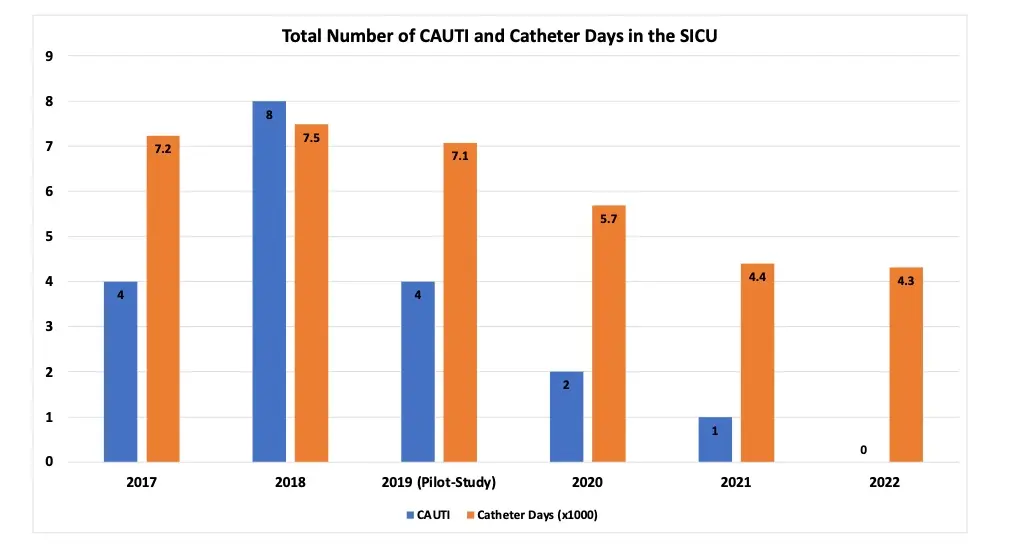Urinary Catheter Alleviation Navigator Protocol (UCANP) in the SICU
Author(s):
Holland Korbitz; Sami Majdalany; Arjun Muralidharan; Michael Bock; Marcus Jamil; Arielle Hodari Gupta
Background:
Indwelling urinary catheters are directly related to the development of catheter-associated urinary tract infections (CAUTI), which contribute to increased morbidity and mortality, prolonged hospital stay, and increased healthcare costs. In a single-institution tertiary care hospital, the Urinary Catheter Alleviation Navigator Protocol (UCANP) was introduced into the Surgical Intensive Care Unit (SICU). We sought to determine if our efforts resulted in fewer catheter reinsertions, catheter days, and overall CAUTI risk.
Methods:
This was a quality improvement initiative implemented in the SICU in 2019. We collected data starting two years prior to the pilot trial through 2022. Patients with an indwelling urinary catheter were eligible. Our protocol consisted of removing the indwelling urinary catheter, bladder scanning after four hours, and performing an intermittent straight catheterization if the bladder scan was greater than 400cc. This cycle was repeated until the patient spontaneously voided with a post-void residual of less than 100cc, or the catheter was reinserted at the discretion of the SICU team. Rates of catheter reinsertion, catheter days, and assessment of CAUTI risk were analyzed. A regression model was used to compare length of stay, catheter days, CAUTI, age, gender, BMI, use of alpha-blockers or 5-alpha reductase medications, diabetes and hypertension.
Results:
We reviewed data from 430 patients in the SICU who were eligible for the UCANP protocol between 2017-2022. Since implementing the protocol, total catheter days decreased from 7,224 in 2017 to 4,317 in 2022, and the number of CAUTI has continued to decrease (Figure 1). There was a significant difference (p=0.004) when comparing catheter days and CAUTI between 2017-2022.
Conclusions:
Implementation of the UCANP protocol in the SICU has facilitated early and safe removal of indwelling urinary catheters, and has reduced urinary catheter-related complications in surgical patients.


